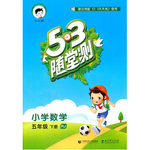题目内容
A new study finds that plants communicate with one another to warn of danger.
We often consider plants as the furniture of the natural world. They don’t move; they don’t make sounds, they don’t seem to act on anything. But as is often the case, plants talk to each other all the time. And the language is chemical.
Over the years, scientists have reported that different types of plants, from trees to tomatoes, give out chemicals into the air to help neighboring plants. These chemical warnings can spread information about one plant’s disease or infestation(虫害), so other plants can protect themselves. But how plants receive and act on many of the information exactly is still mysterious.
In this week’s Science Magazine, researchers in Japan offered some explanations. They have found out one chemical message and traced it all the way from beginning to end.
The scientists looked at tomato plants infested by a common pest(害虫). To start out, they grew plants in two separate plastic spaces connected by a tube(管子). One plant was infested and placed upwind and the other was uninfested and placed downwind. The downwind plants were later exposed(暴露) to the pest. The results showed that plants near sick neighbors before were able to protect themselves better against the pest.
They found one chemical appeared more often in the exposed plants. The chemical is called HexVic. The scientists discovered where HexVic come from, and put it over healthy plants. Those plants were then able to produce HexVic. Researchers made sure that uninfested plants could fight off bugs and diseases. How do they know when to protect themselves? They are warned first by their friendly plant neighbors.
It is not a simple story, and it may be happening in more plant species than tomatoes. It may also be happening with more chemical signals that are still unknown to us. In a word, we know that plants not only communicate, but also look out for one another.
小题1:The underlined “traced” in the fourth paragraph probably means _________ here.
小题2:For scientists, which are the right steps to watch tomato plants infested by a pest?
① Place the infested plant upwind.
② Place the uninfested plant downwind.
③ Expose the downwind plants to the pest.
④ Grow plants in two separate plastic spaces connected by a tube.
小题3:You can put the sentence “The researches also studied leaves from exposed plants and unexposed plants.” At the beginning of
小题4:Which of the following can be the best title of this passage?
We often consider plants as the furniture of the natural world. They don’t move; they don’t make sounds, they don’t seem to act on anything. But as is often the case, plants talk to each other all the time. And the language is chemical.
Over the years, scientists have reported that different types of plants, from trees to tomatoes, give out chemicals into the air to help neighboring plants. These chemical warnings can spread information about one plant’s disease or infestation(虫害), so other plants can protect themselves. But how plants receive and act on many of the information exactly is still mysterious.
In this week’s Science Magazine, researchers in Japan offered some explanations. They have found out one chemical message and traced it all the way from beginning to end.
The scientists looked at tomato plants infested by a common pest(害虫). To start out, they grew plants in two separate plastic spaces connected by a tube(管子). One plant was infested and placed upwind and the other was uninfested and placed downwind. The downwind plants were later exposed(暴露) to the pest. The results showed that plants near sick neighbors before were able to protect themselves better against the pest.
They found one chemical appeared more often in the exposed plants. The chemical is called HexVic. The scientists discovered where HexVic come from, and put it over healthy plants. Those plants were then able to produce HexVic. Researchers made sure that uninfested plants could fight off bugs and diseases. How do they know when to protect themselves? They are warned first by their friendly plant neighbors.
It is not a simple story, and it may be happening in more plant species than tomatoes. It may also be happening with more chemical signals that are still unknown to us. In a word, we know that plants not only communicate, but also look out for one another.

小题1:The underlined “traced” in the fourth paragraph probably means _________ here.
| A.reported | B.followed |
| C.doubted | D.developed |
① Place the infested plant upwind.
② Place the uninfested plant downwind.
③ Expose the downwind plants to the pest.
④ Grow plants in two separate plastic spaces connected by a tube.
| A.③①②④ | B.①④③② |
| C.④①②③ | D.④②①③ |
| A.Paragraph 3 | B.Paragraph 4 |
| C.Paragraph 5 | D.Paragraph 6 |
| A.Communicating Plants and Terrible Diseases |
| B.Talking Plants and Friendly Warnings |
| C.Protecting Plants and Clear Information |
| D.Growing Plants and Mysterious Chemicals |
小题1:B
小题2:C
小题3:D
小题4:B
试题分析:本文叙述了一项新的研究发现植株之间交流是危险的警告。植株之间的交流就是一种化学物质。科学家观察了害虫在植株上滋生的过程,发现在被害虫感染的植株上有一种化学物质HexVic.这种物质放在健康的植株上,也会产生这些物质。因此要确保植株健康,首先要有友好的邻居。总之,植株之间不仅交流,而且要互相小心。
小题1:词义猜测题。根据 all the way from beginning to end.可知此处从头到尾一直在跟踪,故选B。
小题2:细节理解题。根据To start out, they grew plants in two separate plastic spaces connected by a tube(管子). One plant was infested and placed upwind and the other was uninfested and placed downwind. The downwind plants were later exposed(暴露) to the pest.可知科学家观察害虫在植株上滋生的步骤为:首先他们在两个由管子连接独立的塑料空间种上植株,一棵植株被感染上害虫,放在迎风的地方,另一棵植株没有被感染,被放在顺风的地方。不久顺风地方的植株也暴露在害虫面前。故选C。
小题3:推理判断题。根据They found one chemical appeared more often in the exposed plants. 可知他们在被暴露的植株上发现了一种化学物质,故在此之前应是科学家把被暴露的植株和没被暴露的植株进行比较,才会发现他们之间的差别。因此这句话应出现在第6段。故选D。
小题4:标题归纳题。根据A new study finds that plants communicate with one another to warn of danger. 可知本文是围绕着对植物之间互相交流带来的危险警告。故选B。

练习册系列答案
 53随堂测系列答案
53随堂测系列答案
相关题目
